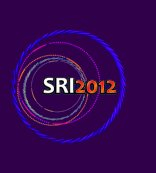Speaker
Dr
Peter Denes
(Lawrence Berkeley National Laboratory, Berkeley, CA 94720 USA)
Description
The Advanced Light Source is a predominantly soft X-ray storage ring facility, where needs for higher speed and higher efficiency pixilated detectors has driven our activities. We have developed 100s of Megapixel per second (MPix/s) direct X-ray detectors based on CCDs grown on thick, high-resistivity silicon along with a custom readout circuit (fCRIC) in 0.25 μm CMOS. Initial versions of these FastCCDs with 30 μm pixels have been used at the ALS to demonstrate soft X-ray ptychography and white light Laue microdiffraction. They are also in use at the APS for photon correlation spectroscopy and at the LCLS for resonant inelastic scattering . A new, larger format version has been developed, and is planned for use at ALS, APS, LCLS and Eu XFEL.
A 10,000 MPix/s direct detection CCD is in development, based on a column parallel CCD with 30 x 50 μm2 pixels, and a custom readout circuit (HIPPO ) in 65 nm CMOS. The core of the HIPPO consists of a 12-bit, 80 MSPS ADC, which is used with four multiplexed inputs to allow correlated double sampling at 10 MHz. Each CCD column is connected to a low-noise charge-sensitive preamplifier , which, together with the ADCs, are on a 50 μm pitch.
Associated developments include fine pitch (5 μm) direct detection CCDs for spectroscopy, together with Active Pixel Sensors in bulk CMOS and Silicon-on-Insulator. In all of these cases, thin conductive entrance windows are required, and we have been developing low-temperature processes (which can be used after the other detector processing steps have taken place). A simple and robust technique for 1,000 Å thick contacts has been developed, and work is on-going for 50-100 Å thick contacts.
Author
Dr
Peter Denes
(Lawrence Berkeley National Laboratory, Berkeley, CA 94720 USA)

